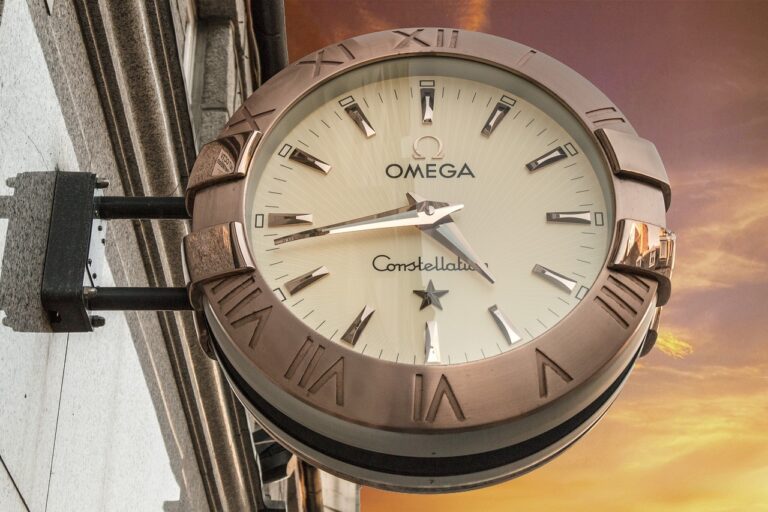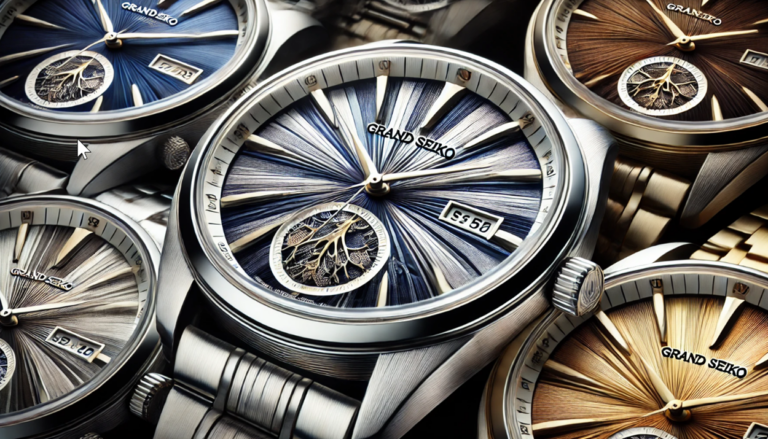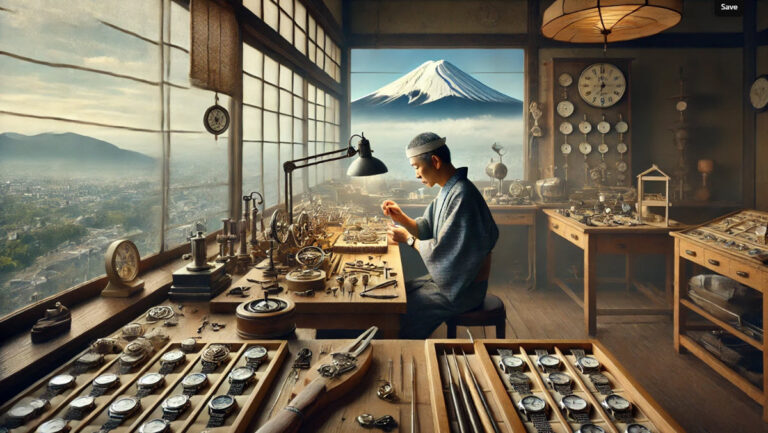During the course of history, watches have served multiple purposes as emblems of epochs, mechanical brilliance, and even art. As watches tell a story about cultures as well as technological and industrial revolutions, they also connect to each beat of time. While all timepieces serve the fundamental function of measuring time, their forms have changed dramatically over the course of history; from ancient sundials to today’s smart phones.
Exploring The Breaking Dawn: Ancient Sundials and Water Clocks.
Before mechanical watches came into the picture, ancient civilizations had already invented ingenious ways of measuring the passing of time. One of the oldest instruments in measuring time, sundials, used the sun’s position to cast shadows as a mark for the hour. Besides being functional, these instruments were a symbol of higher power, knowledge, and authority.
In ancient Egypt, sundials were placed in temples designated to Ra, the sun god. They served the dual purpose of being spiritual icons and scientific apparatus. Other civilizations worked on water clocks called clepsydras which measured time by the flow of water. These devices were time markers in India and China, and being used in ceremonies made them essential for cultural and religious practices.
The remarkable Antikythera Mechanism, which has the distinction of being uncovered from a shipwreck close to the Greek island of Antikythera, is a testament to the horological genius of ancient civilizations. It is estimated to have been developed around 150 B.C.E and possessed the incredible ability to track and predict solar and lunar eclipses. This innovative device was capable of much more than the intricacies we celebrate in contemporary luxury watches.
The 13th century saw remarkable progress in mechanical timekeeping through the creation of the first mechanical clocks. Although it was initially invented in monasteries as a means to measure devotional hours, it’s weight-driven mechanism found its way into town cathedrals. A focal point of this period was the construction of the Prague Astronomical Clock in 1410 which served both as a wonder of technical achievement and an illustration of civic pride.
The period set the foundation for precise time measurement that would one day evolve into notchable wristwatch. The philosophy of early clockmakers is evident in contemporary timepieces manufacturers such as Patek Philippe. ‘You never actually own a Patek Philippe; you merely look after it for the next generation,’ is a timeless quote that embodys reverence towards craftsmanship and time.
Pocket Watches: The Earliest Wearable Timepieces (16th to 18th century)
Around the 16th century, during the Renaissance period, large clocks began their transformation to pocket watches. Their manufacture was on the rise due to popularity amongst the European elite, along with their purchase trend. The English King Charles II popularized waistcoats with specially designed pockets to hold watches, which allowed the wearer to simply glance at the time. This meant that watches were not only functional instruments, but fashionable accessories.
As people started engraving artistic and family crests, customization surged adapting pocket watches into treasured heirlooms.
Tourbillion is known today as the mechanism that support the watch’s accuracy by counteracting gravity, and thus Abraham-Louis Breguet became famed as the father of modern horology. Keeping his legacy alive, luxury brands Breguet and Blancpain remember him for his lasting mark in horology.
Wristwatches: From Military Requirement to Everyday Ornament (19th Century)
Initially, wristwatches were simply pieces of ornamental jewelry for women in the 19th century and only much later did they appreciate their benefits during wars. German emperor Wilhelm I was known to gift wristwatches to his officers during the franco-prusssian war of 1870-71, marking the start of widespread adoption.
With the practicality of synchronizing attack schedules during world war I, the requirement of wristwatches during warfare became apparent. This shift in design transformed them into essentials for both men and women.
In 1905, Rolex was trailing behind one of the most renowned brands of the time. When he built the world’s first waterproof wristwatch, the oyster, in 1926, Rolex was quick to fulfill the wartime demand for durable wristwatches. The innovation not only revolutionized Rolex but also enhanced the company’s image and set luxurious functional standards for the industry.
The Digital Revolution: 1970s to 1990s
It’s irrefutable that the 1970s had its moments of excitement, especially in regard to wristwatch manufacturing due to The Quartz Revolution or The Quartz Crisis. Japan truly does deserve some credit after all, starting with Seiko and their very first wrist quartz watch that came out in 1969 and wasn’t overpriced. This field marked a technology milestone for the industry as mechanical Swiss watch manufacturers faced unrivaled competition due to their precision.
A brand from Switzerland called Omega was, and still is, famous for their impeccable quality; but during this period, they suffered considerable competition. Good for them, their speed was paved with heritage. Omega’s iconic Speedmaster, famously worn during NASA’s Apollo missions, aided their reputation too. While the Speedmaster’s nickname, the “Moonwatch,” does symbolize the watch’s unparalleled place in horological history, it stands as a testimony for the brand’s prestige.
The Smartwatch Era: 21st Century
Smart Watches are an undeniable contemporary innovation, and with the advent of Apple Watch and Samsung Galaxy Watch models, the 21st century transformed how people viewed wrist watches.
And it’s no wonder as they go OVERE AND BEYOND the expectations of a wrist watch. These sophisticated devices go as far as tracking health by performing ECGs, managing time, sending notifications, monitoring fire exercises, and tracking heart rates.
Apple Watch Ultra embodies the practical side of wearable technology. Smartwatches appeal to the mass market while brands like Audemars Piguet and Vacheron Constantin flourish as high-end brands. These luxurious brands demonstrate that the affection people have towards crafted artistry is far more valuable than crafted technology.
Moving forward, the synthesis of innovation and traditionalism will peak in the field of watches. Some brands are already using blockchain technology to authenticate watch pieces like those made by Breitling and reduce counterfeiting. Collectors don’t need to leave their homes; AR technology allows them to “try on” watches.
The paradigm shifts towards hybrid watches, which are defined as luxury timepieces with mechanical movements and smart features, is gaining traction. Industry frontrunners like Tag Heuer preserve the craftsmanship put into their smart watches while adopting contemporary advancements.
In all regards, the industry is likely to maintain its timeless status by crafting coveted pieces that seamlessly blend artisanal craftsmanship with innovative technology to ensure watches remain a timeless accessory.
Conclusion
The advancement of watches certainly involves their technical improvements, but it also impressively captures the evolution of human life and humanity’s unrelenting desire to measure and capture every second. Watches have changed with us from the early sundials, precision quartz, technological wonders, and now even mechanical works of art. They have changed alongside every generation.
At Evolution Watches, we strive to respect and fuse with modernity such history. Our pieces are designed not only to measure time. They measure history, personal style and flawless detail.
In no other industry does the world keep changing so fast and constantly. In no matter how advanced, feature loaded and innovative a timepiece is, nothing will outshine the beauty of a well-crafted watch and it’s charm. The passion, creativity and craftsmanship that is put into each piece, regardless of when it was made, connects all of us and reminds us of how important it is to respect time.




